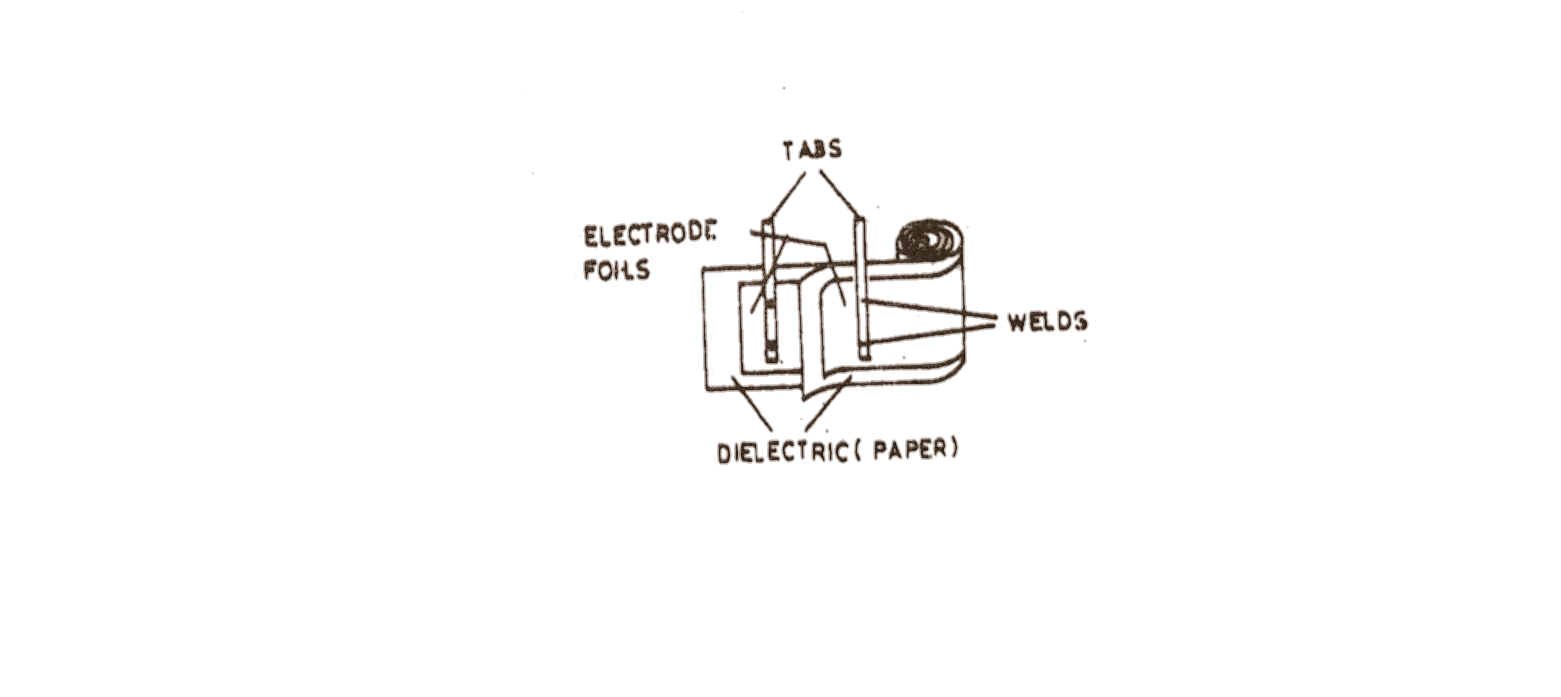Types of Capaitor
CLASSIFICATION OF CAPACITORS
The capacitors can be classified on the basis of nature of value, type of dielectric material used and polarity.
1. On the basis of nature of value:
(i) Fixed value capacitor
(ii) Variable capacitor.
Fixed value capacitors are those for which value of capacitance is constant and cannot be changed whereas variable capacitors are those for which value of capacitance can be changed by adjusting some parameter.
On the basis of dielectric material used. On this basis capacitors are of the following types
(i) Paper capacitor
(ii) Ceramic capacitor
(iii) Mica capacitor
(iv) Plastic capacitor
(v) Air capacitor
(vi) Glass capacitor
(vii) Vitreous enamelled capacitor.
(viii) Electrolytic capacitors.
3. On the basis of polarization. The capacitors are of three types:
(i) Polarized
(ii) Semi - polarized
(iii) Non - polarized
FIXED VALUE CAPACITOR
Different fixed value capacitors will be discussed one by one.
1. Paper Capacitor : These capacitors employ paper as dielectric material. The paper sheets used for paper capacitor are impregnate with oils or waxes to prevent absorption of moisture. Impregnation also increase dielectric strength. These paper sheets are wound with thin aluminium foils. The contact to metal is made by welding leads to it. Finally the capacitor is encapsulated in a metal can or in resin. These capacitors are larger in size due to foil size. These capacitors are used in single phase motors and power factor correction.
The size of paper capacitors can be reduced by metallization of aluminium by vacuum deposition on to paper sheets.
2. Mica Capaitor : Muscovite mica is naturally occurring substance having dielectric constant of 8. can be laminated into very thin sheets. This material has good mechanical strength and can be used up to 500 ° C. Impregnants like polystyrene are used to improve the properties of mica. Silver electrodes are metallized directly on the sheets / paper of mica and several of these are stacked together to get a complete capacitor. The assembly is then either molded in plastic or dipped in resin.
These capacitors are available from 1pf to few microfarad up to a voltage rating of 2000 V. They can be used over a temperature range of -55°C to + 125°C. They generally tind application in filter circuits and funing circuits.
3. Ceramic Capacitor : These capacitors use ceramic as dielectric material. These capacitors can be divided into two classes :
(i) Low loss low permittivity type.
(ii) High permittivity type.
4. Plastic Film Capaitors : Since polymeric materials can be formed in thin, highly uniform and nonporus films with high dielectric strength, these materials are preferred dielectric materials for capacitors.
These capacitors use different plastic Film as dielectric. These capacitors are manufactured in two ways :
(i) Metal foil
(ii) Metallised foil capacitor.
In metal foil type plastic capacitor, a number of thin films of plastic material are interleaved with aluminum foils, and is wound into a cylinder. The coil is then filled with end caps and encapsulated either in resin or insulating lacquer.
In metallized type capacitors, the electrodes are vacuum deposited on plastic films. Since thickness of deposited film is small, higher capacitance can be realised. To this are welded leads. This is encapsulated as earlier.
5. Air Capaitor : Air dielectric capacitors are mainly used as laboratory standards of capacitance for measurement purpose. Beech capacitors are very accurate but their size is large. Air capacitors are available in working voltage up to 45 kV and range of capacitance available is 0.025 pF to 6 pF.
The insulating material used in which capacitors is fused silica and whole assembly is shielded in metal case.
6. Glass Capaitor : Here very thin sheets of class are used to form these capacitors. The sheets are interleaved with aluminium foil and fused together to form solid block. These capacitors are smaller in size and can be operated at high frequencies and voltage. Their capacitance stability and Q are very constant and can be used upto 200°C. These capacitors are available in range of 0.1 pF to 12 uF with working voltage range of 25 V to 30 kV.
(7) Vitreous enamel capacitor : These capacitors are manufactured by spraying vitreous enamel on metal plates which are stacked and fired at a temperature high enough to vitrify the glaze. These capacitors have very good high frequency characteristics and can be used at high temperature (150 - 200 ° C). They can withstand high humidity conditions.
(8) Electrolytic Capacitors : In electrolytic capacitors, instead of using plates separated by a diclectric, the capacitor has a mettalic anode with oxide film grown over it and this oxide layer acts as dielectric. It is surrounded by electrolyte as shown.
This electrolyte acts as cathode. Metal cathodes are kept in touch with electrolyte. Electrolytic capacitors are broadly classified in two categories:
(a) Aluminium electrolytic capacitor
(b) Tantalum electrolytic capacitors.
VARIABLE CAPACITORS
Variable Capacitors are invaluable in design of electronic equipment. They are commonly used in application where exact value of capacitance cannot be calculated using normal design procedure. In this case a variable capacitor is employed to provide the needed capacitance range.
As can be seen from expression for capacitance, capacitance can be varied by changing three parameters i.e. distance between the plates, dielectric or area of plates. In most of variable capacitors, area of plates is changed, in some cases thickness of the dielectric or distance between plates in varied. Dielectric materials used in most of the cases variable capacitors are air, ceramic, glass, plastic and mica.























1 comment:
high voltage film capacitors Really I enjoy your site with effective and useful information. It is included very nice post with a lot of our resources.thanks for share. i enjoy this post.
Post a Comment